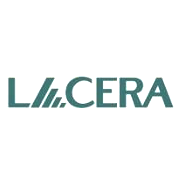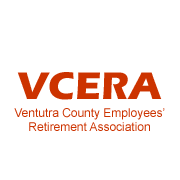CalPERS Shifts Blame to Cities for Lost Pensions
A tiny Sierra Nevada town called Loyalton, with a population of 862, and the now defunct East San Gabriel Valley Human Services Consortium (LA Works) – have played a major part in rocking the nation’s largest state pension fund, the California Public Employees’ Retirement System (CalPERS). It all happened when CalPERS received blistering publicity after slashing the pensions for Loyalton and LA Works retirees.
Both entities had ceased paying into CalPERS and exited the system in 2013. After a period of time, CalPERS responded by reducing the affected retirees’ benefits by as much as 63%. The resulting public outcry laid the blame squarely on CalPERs.
CalPERS’ View
CalPERS however, while acknowledging that the situation was a public relations nightmare, did not view it as one of their own making. Its board sought a sponsor for a state bill that would require agencies to notify their employees in the event they intend to leave the pension fund. By doing so, CalPERS hoped the employees would pressure their former employers to remain in the system, or at the very least, hoped to shift the responsibility of administering pension benefits to cities and districts instead of on CalPERS.
CalPERS Disclosure to Retirees is Crucial
However, critics feel that such a proposal is not nearly enough. They insist that any new legislation must require disclosure of the state’s pension debt and the low rate at which CalPERS is funded. They feel that retirees and taxpayers deserve to be told why public services continue to be reduced, while local taxes keep increasing.
Loyalton’s decision to exit CalPERS was simply because the town could not afford to make the payments. LA Works, on the other hand, exited in 2014 because it went out of business. When they left, CalPERS presented each of them with massive bills. Loyalton’s “termination fee” was $1.66 million, an amount impossible to pay when one considers that its entire annual budget was just $1 million.
While CalPERS would like for retirees to believe that it’s the local agencies’ fault for leaving the fund, the reality is that the pension fund effectively put those local agencies in their current predicament.
How the Public Sector Differs from the Private Sector
In the private sector, most employees receive 401(k) plans. Money is deducted from the employee’s paycheck, and in some cases is matched by the employer. This money is invested in a mutual fund. If returns are good, the employee benefits. The public sector, however, is a bit different. Employees receive what is termed a “defined benefit.” That means a payout is guaranteed based on a formula, regardless of how well the pension fund’s investments are doing. The “unfunded liability” is the difference between what has been promised to the employee, and the funds available to satisfy those promises. Taxpayers are on the hook for that shortfall.
Should an agency want to leave, for whatever reason, CalPERS transfers them into a separate fund designated for terminated agencies, where it only predicts a rate of return of around 2 percent. Then the exiting local agency is billed for the difference.
No Obvious Solution to the CalPERS Problem
Obviously, CalPERS doesn’t want agencies to leave the program. Rather than working with these agencies to agree on a balance, and work out a plan to pay the difference, some have likened the negotiations as something akin to “negotiation” between a mugger and a victim. In the case of Loyalton and LA Works, the court of public opinion weighed in heavily in the favor of the former employees. It seems that while CalPERS seeks a legislative solution, its proposals have not gone nearly far enough to satisfy its critics.
Our attorneys study these issues carefully, and keep tabs on what is clearly a very fluid situation. If you work in the public sector and plan to retire, or if you have retired from the public sector already, our attorneys can answer your questions and help you understand if your CalPERS disability retirement benefits or other public employee benefits are at risk.
CalPERs Disability Retirement Attorneys
The disability lawyers at Cantrell Green are among the few attorneys who understand and specialize in CalPERS disability benefits. If you are unsure if qualify for CalPERs disability retirement benefits, call our experienced lawyers today. We would be happy to help you determine your eligibility for disability retirement under the CalPERs system.
Free Consultation with a CalPERs Attorney: 562-622-4800
This article applies to members of California Public Employees’ Retirement System (CalPERS); and does not reflect the rules, laws or regulations governing how other public retirement systems are administered. If you have question about another public employee retirement system, find your system, below – or call our attorneys at: 562-622-4800

Thank You for Visiting Our Disability Retirement Blog!
Our highly specialized disability retirement attorneys are committed to ensuring that every injured or disabled public employee obtains the disability retirement benefits he or she has earned.
We have successfully filed hundreds of disability retirement applications and appeals – obtaining millions of dollars in disability retirement benefits in our four decades of legal service.
In our Disability Retirement Blog, our attorneys keep you updated on the latest, news and information pertaining to CalPERS, CalSTRS, OCERS, LACERA. SBcera, VCERA & SDCERA disability retirement.











